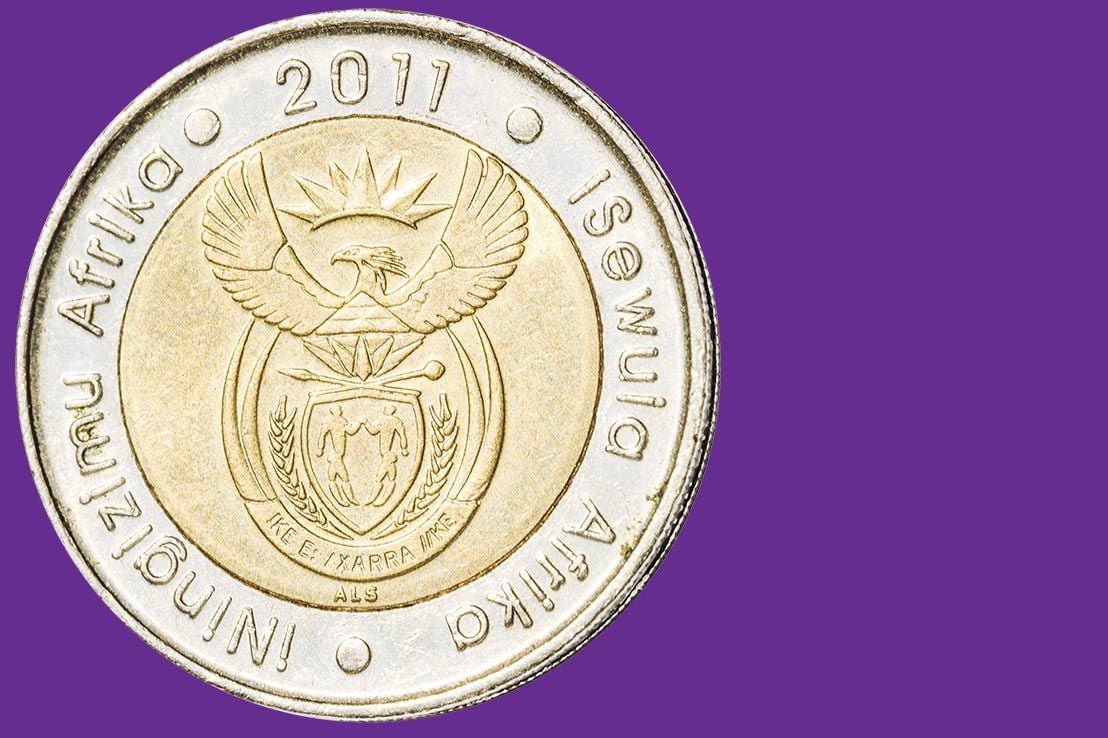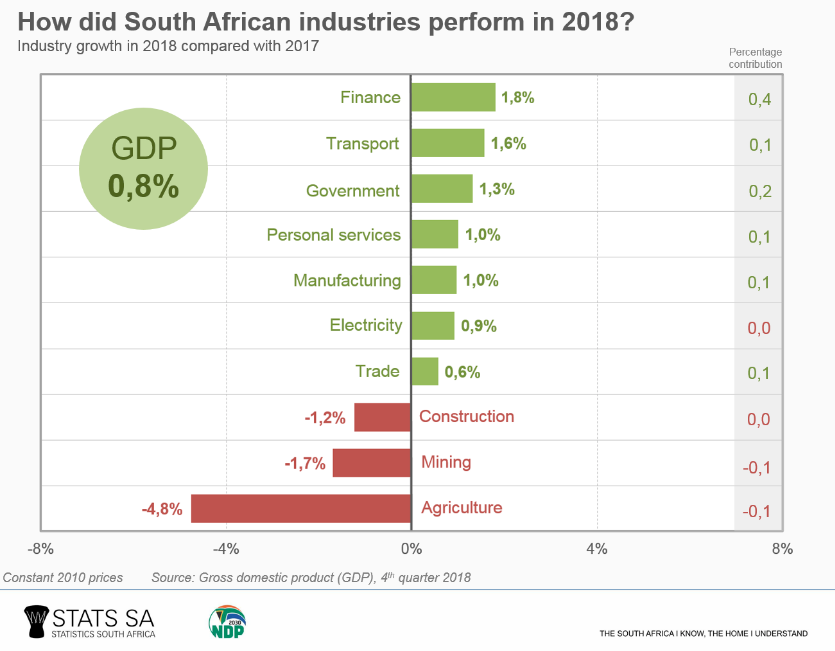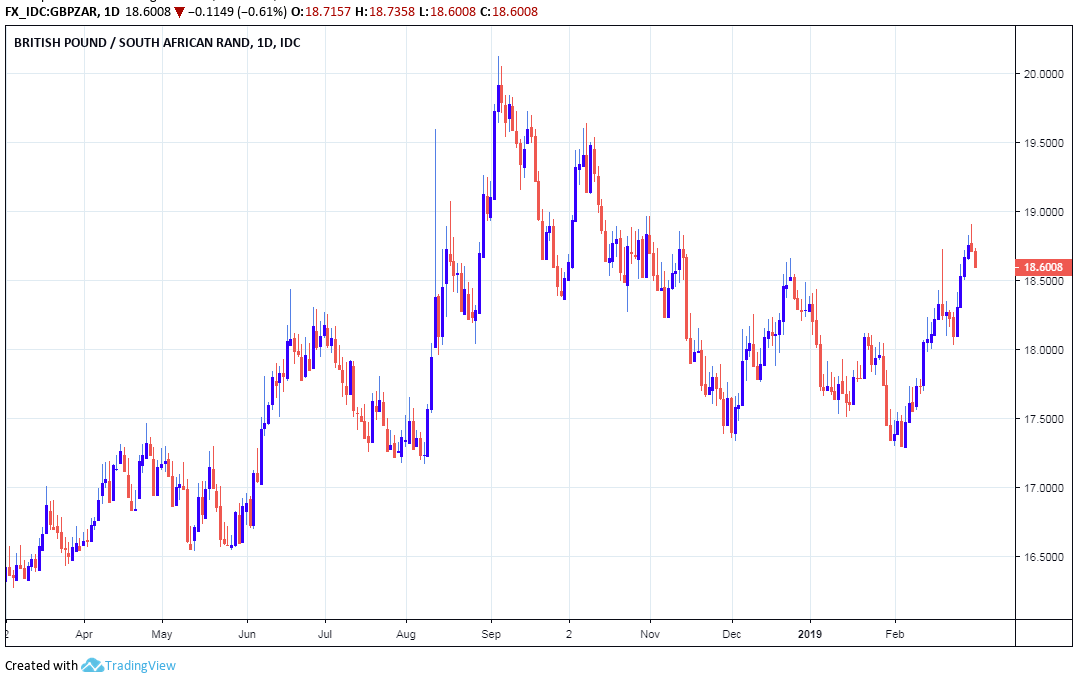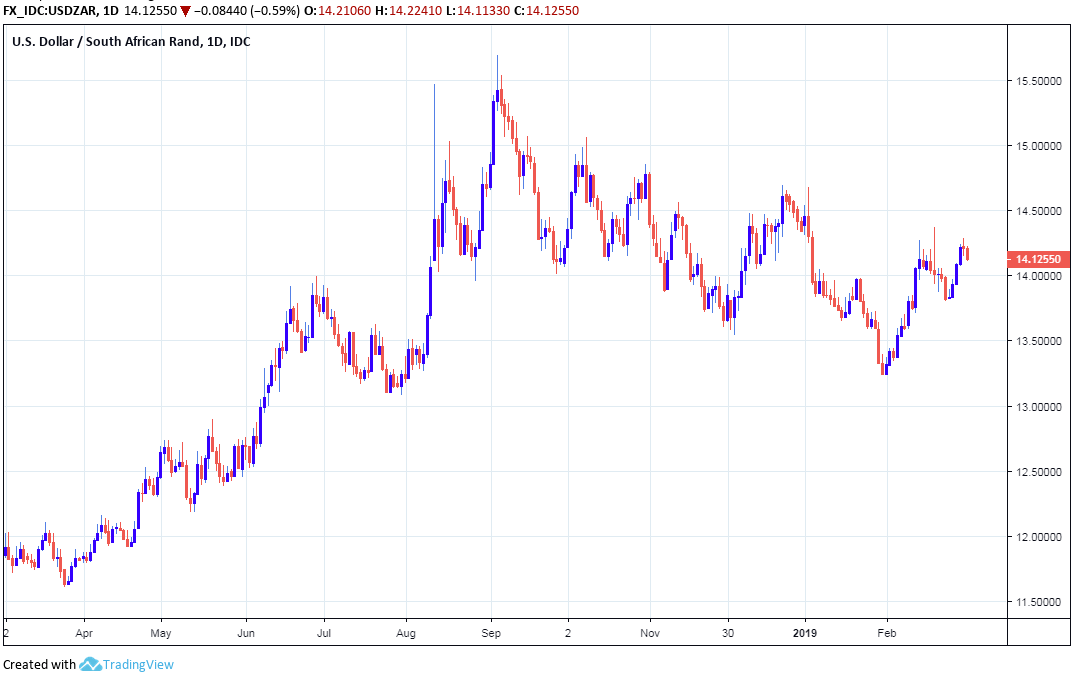Rand Rises after Growth Surpasses Expectations but Risks Lurk in the Longer Grass of March
- Written by: James Skinner
 © Pound Sterling Live
© Pound Sterling Live
- ZAR advances on GBP, USD after GDP surprises on upside.
- But Moody's rating decision is due in March, outlook to be cut.
- This could mean ZAR losses are lurking in long grass of March.
The Rand advanced against the U.S. Dollar and Pound Tuesday after official data showed the economy growing faster than was anticipated in the final quarter of last year, but local analysts are warning of risks to the South African currency that are lurking in the longer grass of this month.
South Africa's economy grew at an annualised pace of 1.4% during the final quarter of 2018, which is down from an upwardly-revised pace of 2.6% in the previous period but ahead of market expectations for a 1.2% expansion.
The finance, real estate and business services industries were the main contributors to growth in the period, alongside the government, which increased its spending by 1.3% during the period according to Statistics South Africa.

Above: Contributions to South African GDP in Q4 2018. Source: Statistics South Africa.
Despite the beat in the final quarter, the economy grew by just 0.8% as a whole for 2018 after having seen two back-to-back quarters of contraction during the first half of the year, which was technically a recession. And the outlook for the first half of 2019 is bleak, according to some analysts.
"With Eskom’s electricity load-shedding and policy uncertainty ahead of the general elections on 8 May, economic activity likely moderated further in 1Q19 which is the basis for why we think growth in 1H19 will remain feeble before recovering in 2H19 premised on our assumptions of far-reaching economic reforms," says Thanda Sithole, an economist at Standard Bank.
Markets normally only care about GDP data because growth has a direct bearing on inflation and it's changes in consumer price pressures that central banks are attempting to manipulate when they tinker with interest rates, which are themselves the raison d'être for most swings in exchange rates.
For South Africa however, there is more at stake than minor changes in interest rates because without a decent pick-up in growth that facilitates a radical improvement in the nation's finances, the country could lose its last remaining investment grade credit rating.
One way the government can improve its finances is to grow the economy because for each incremental 1% of growth, the debt-to-GDP ratio will fall a bit further. That's to some extent the only option because persistent cuts to spending simply risk shrinking the economy and perpetuating the debt burden.
Moody's will announce its latest decision on March 29 and although many analysts say South Africa may retain its rating at this particular review, the outlook for it could still be cut from neutral to negative.
And Moody's will be watching the nation's economic progress over the coming months for signs of a likely improvement or deterioration in the books come the next government budget update.
"The rand remains vulnerable due to SA’s twin deficits being wider than other emerging markets from a foreign-funding perspective, and also vulnerable to both external and domestic shocks," Sithole says. "The rand still faces the risk of a sovereign ratings downgrade by Moody’s on 29 March, the intractable US-China trade war, Brexit, the global and China growth slowdown, underperforming SA SOEs, and the SA elections on 8 May."

Above: Pound-to-Rand rate shown at daily intervals.
The Rand must navigate additional risk to the credit rating stemming from campaigns for the Presidential election due to be held in May. Fears are that "populist" voices angry at years of economic underperformance could force government into making unaffordable promises in order to remain in power.
South Africa's budget deficit is forecast by the government to stabilise at 4% of GDP by the end of 2022, although it will rise as high as 4.5% in the current year according to Treasury's own figures. This will take total debt-to-GDP from 52.7% in 2018 to 58.9% by the end of 2022.
Moody's said after February's budget there is a risk the actual outcomes are even worse than these projections suggest. It said the budget was "credit negative" because fresh financial support being provided to troubled power utility Eskom will not be fully recouped by cuts to other spending.
If Moody's cuts South Africa's rating from investment grade to "junk" then it could trigger severe losses for the Rand. This is because half of South Africa's government bonds are owned by foreigners who invested in a "global bond fund" and many of those benchmark themselves against the Citi WGBI local currency bond index.
The country will be ejected from that index after losing its last top rating, which would force all of the above referenced fund managers to sell their South African government bonds, likely prompting substantial outflows from the Rand.
"The 2019 Budget was seen as credit negative by Moody’s, but as expenditure exceeds MTBPS projections only in one year it may be enough to stave off an actual credit rating downgrade for the year – we continue to forecast a change in the outlook to negative from stable, signalling a rating downgrade with eighteen months thereafter," says Annabel Bishop, chief economist at Investec Bank, back in February.
The Pound-to-Rand rate was quoted -0.53% lower during morning trading Tuesday but is up 1.8% so far this year, while the USD/ZAR rate was -0.52% lower at 14.12 but and has fallen -1.52% in 2019.

Above: USD/ZAR rate shown at daily intervals.
Time to move your money? Get 3-5% more currency than your bank would offer by using the services of foreign exchange specialists at RationalFX. A specialist broker can deliver you an exchange rate closer to the real market rate, thereby saving you substantial quantities of currency. Find out more here.
* Advertisement




